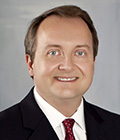- Disaster In The Office
- Saturday, 1:10-2:10 p.m.
- McCormick Place West, W196c
Every anesthesiologist has heard that bad things happen to good people. It’s a hackneyed phrase, but also a very accurate prediction. No anesthesiologist can prevent misadventures such as a hidden medical problem. But every anesthesiologist can, and must, control the outcome of those misadventures.

Paul Willoughby, M.D.
“I don’t think there are any misadventures that are typical,” said Paul Willoughby, M.D., Associate Professor of Anesthesiology at Stony Brook University Medical Center, New York. “But there are endless varieties of hidden medical problems that aren’t really problems until they are discovered in an anesthesiologist’s office. You and your staff have to be prepared to deal with problems you have no way of knowing about in advance.”
Dr. Willoughby is the moderator for “Disaster in the Office,” a Saturday session that will focus on a case of angioedema that resulted in airway obstruction and tracheostomy. He called it a good review of an unusual situation that could affect any anesthesiologist in any office setting.
“This session is a message to people working in offices that they really do need to have appropriate airway equipment ready to use,” Dr. Willoughby said. “All the standard equipment that you would have in an operating room and the standards of care still need to be met. You obviously can’t have facilities like cardiopulmonary bypass in an office setting, but all of the airway equipment absolutely must be available.”
Not being ready for an airway emergency is asking for disaster. There have been multiple court cases around the basic issue of not being prepared for an airway emergency, or not having the appropriate equipment or using it appropriately. Failing to prepare for potential airway obstructions can be a disaster for the patient and the anesthesiologist.
Anesthesiologists who gravitate toward office practice settings are no less trained than their hospital-based colleagues, and office-based practices are no more inherently dangerous than hospital settings, Dr. Willoughby said. It is a matter of matching the appropriate patient with the appropriate anesthesia choices, the appropriate surgical procedures and the appropriate setting.
Anesthesia is about pain management, and there are multiple techniques that can be used. Pectoralis blocks and transverse abdominis plane (TAP) blocks are new techniques that may find a place in the office-based setting.
The anesthesiologist also must consider the type and number of procedures to be performed, and the patient’s condition. Patients typically want to group as many procedures into a single session as possible, especially for plastic surgery and other elective procedures. Multiple procedures may save money, but may not be in the patient’s best interests.
“Grouping procedures or not can be an interesting conversation to have with certain patients,” Dr. Willoughby said. “It’s something to consider on a patient-by-patient basis. Some people may be very thin and can tolerate multiple procedures very well. Somebody else who is having a lot of tissue removed may not be up to having it all done at one time. This is one situation where the customer is not always right.”
Return to Archive Index